Energy Dispersive X-ray Spectroscopy (known as EDX or EDS) for elemental detection and analysis is available at CMi with the X-Max 50mm2 detector from Oxford Instruments. The detector is a silicon drift type, with resolution of 127eV FWHM and detection limit of about 1 atomic % from depth of 0.3-3um. Both AZtec and INCA versions of the control software are installed and available.
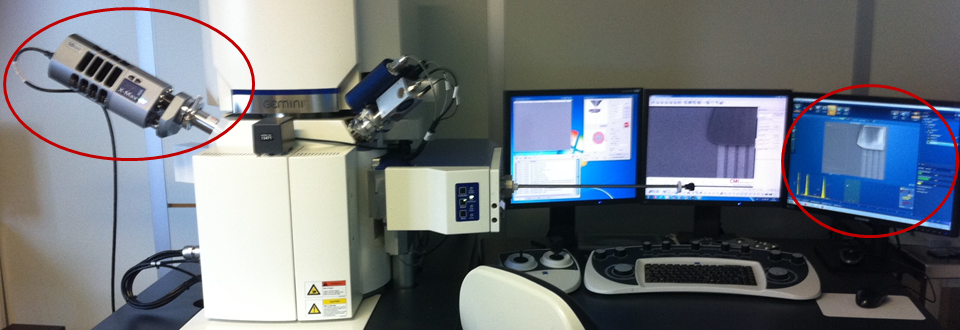
EDX access
The Oxford Instruments EDX detector with its control computer and software is integrated into the SEM MERLIN in zone 15. Please note that training on the SEM MERLIN does not automatically qualify a user for the use of EDX. Interested users need to request a separate training if they want to use EDX.
Getting started
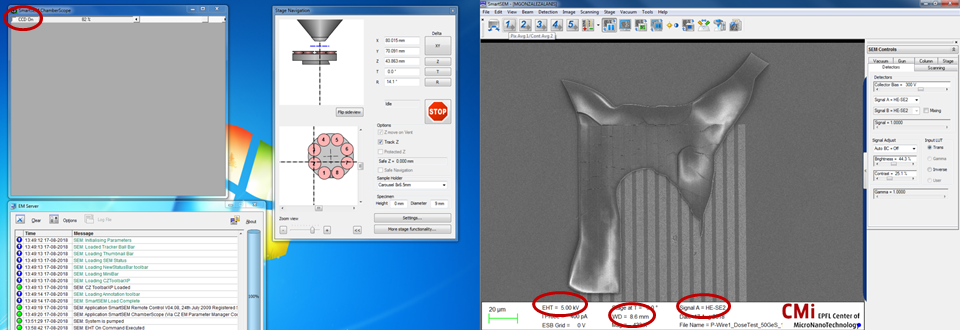
Load your sample into the SEM, drive it to the correct position, turn on EHT, calibrate the focus, correct astigmatism and aperture alignment, and find the location on your sample where you want to perform the EDX analysis. The optimum working distance (WD) for the strongest EDX signal is 8.5mm. The EHT value should be about twice the value of the energy of the element spectral line you are trying to detect. Switch to SE-SE2 detector only. Turn off the CCD camera light inside of the chamber (otherwise, the photons from this light will completely oversaturate the EDX photon detector).
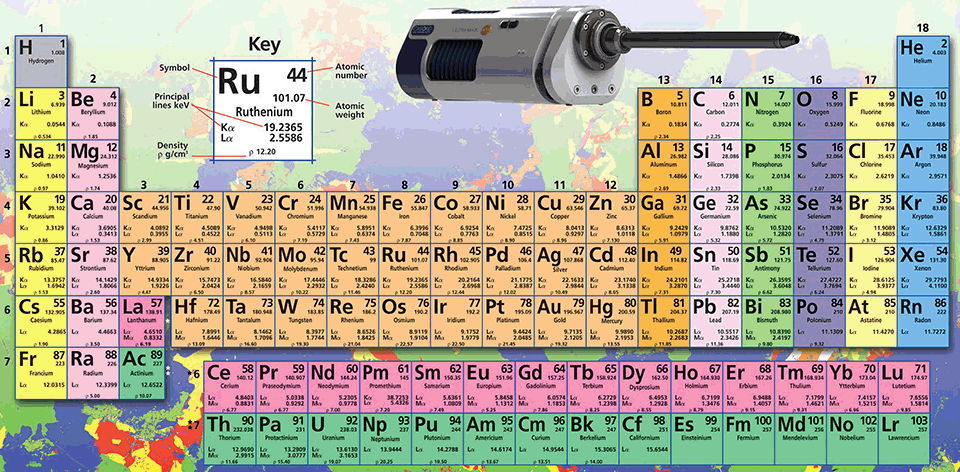
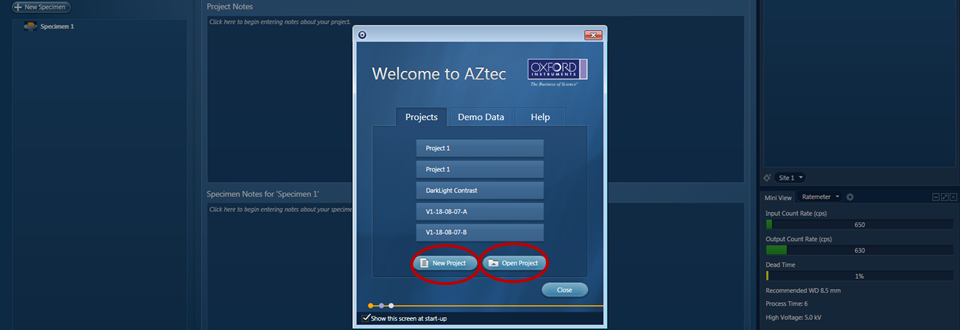
Start the AZtec software on the EDX PC. The software icon is on the desktop of the right monitor. Open your older project or start a new one. If starting a new one, please, navigate yourself first into a proper user folder that was created for you during the training session.

Insert the EDX detector: Needle icon at the bottom right side of the monitor – Position – In.

Give the detector about a minute to perform the operation, wait until the detector is fully inserted in.
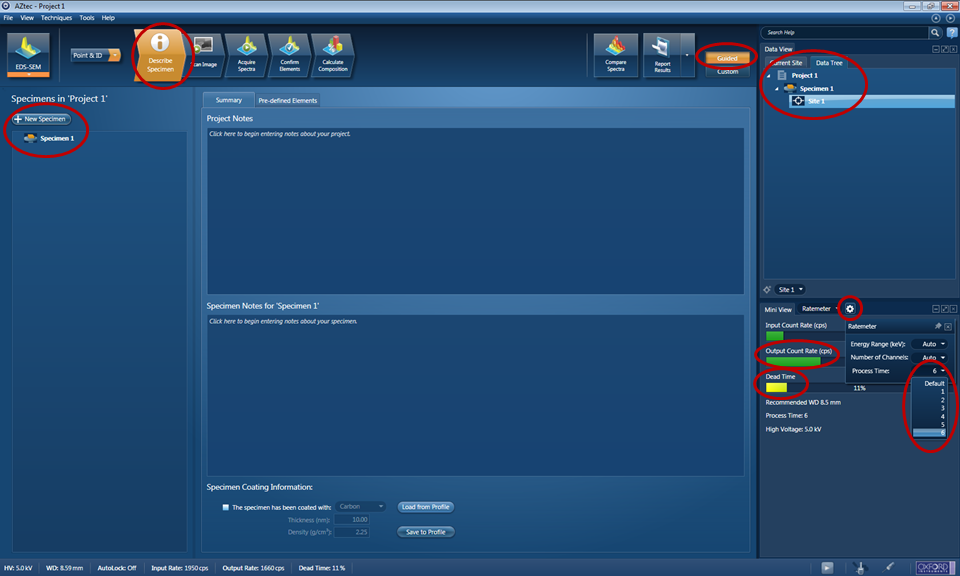
Make sure you have a live image turned on in the SEM (scan speed 1). Verify that you have a good Output Count Rate (green bar about half-width of the screen) and a reasonable Dead Time (between 10-30%). If the death time is too high, you can reduce the Process Time to lower value. (Value of 6 results in best resolution, but highest Dead Time).
Rename or add a new specimen. IN the data view, you can see your entire file structure and data organization (samples, sites, spectra, images, maps, etc.) for your current project. Use a “Guided” mode. Should you not be able to yield to a temptation to customize the appearance of individual windows and their selection, please make sure that you re-set everything to defaults before you close the software!!! We train new users all the time, and new users do appreciate, if the windows and information do appear in the same location where they used to be during the training. The AZtec software is not a multi-user environment with individual settings for each user. Whatever setting you change does get changed for everyone. Click on the “Describe Specimen” step on the top progression of processing steps to start.

Fill in specimen notes, if you wish. If your sample has been coated by a thin conductive layer, you can ask the software to automatically subtract it from the collected signal. Be careful to include correct information about the composition and thickness of your coating. Move to the “Pre-defined Elements” tab, Clear all (elements that might have been selected and saved by the previous user), and check the “Perform Auto ID During Acquisition”, if you want the software to automatically label the spectral peaks.

Select the Module of the software you want to run from the menu on the top left.
Analyzer
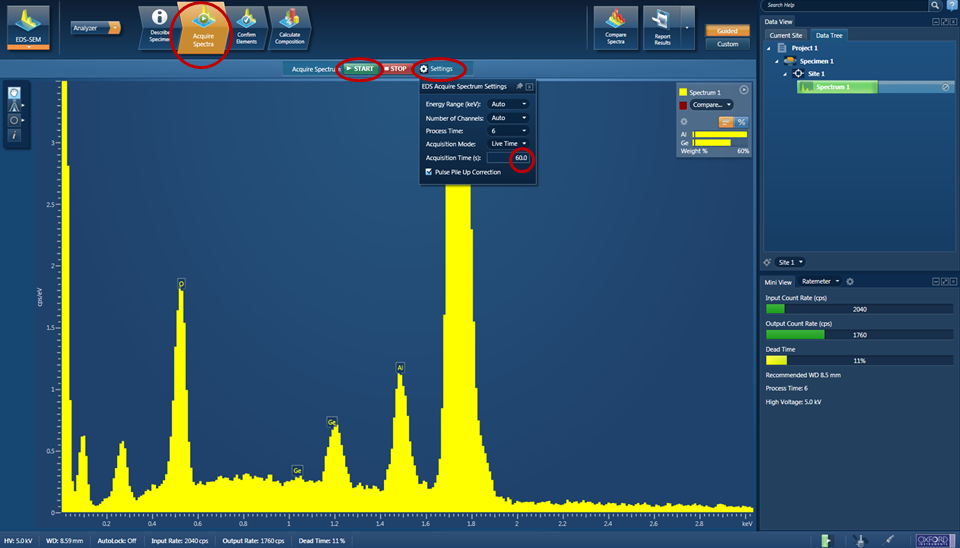
The Analyzer module will integrate all incoming x-ray photons into a single overall spectrum. This means that you are collecting and integrating information from the entire part of your sample that is irradiated by the incident SEM electron beam.
Go to “Acquire Spectra” step, check that you have your desired acquisition time set correctly in the Settings pull-down menu, and click START. The spectrum collection will run until the preset time is reached or until you stop the acquisition by clicking the STOP button.
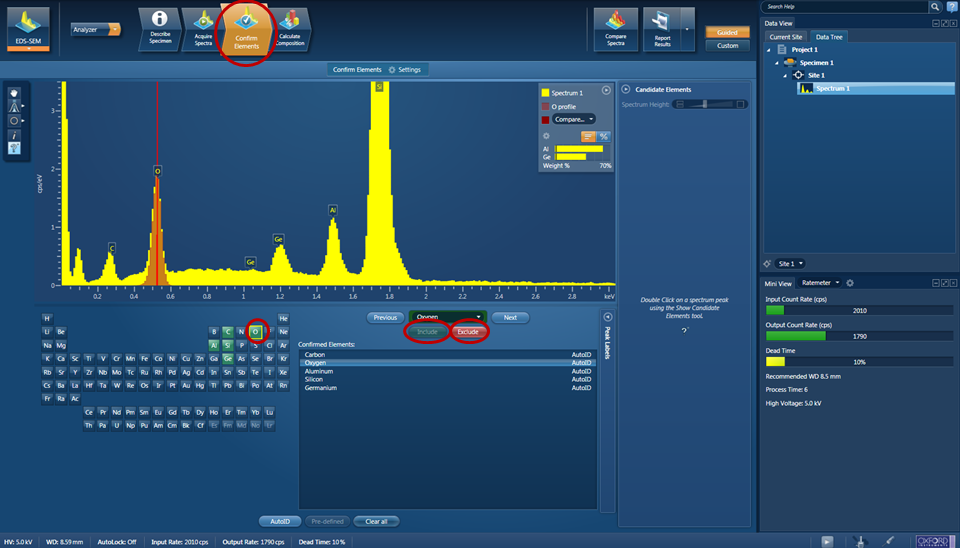
In the Confirm Elements step (that you can access even while the spectrum is still being collected) you can confirm all elements that you want to consider in your analysis and Include or Exclude them as you please.
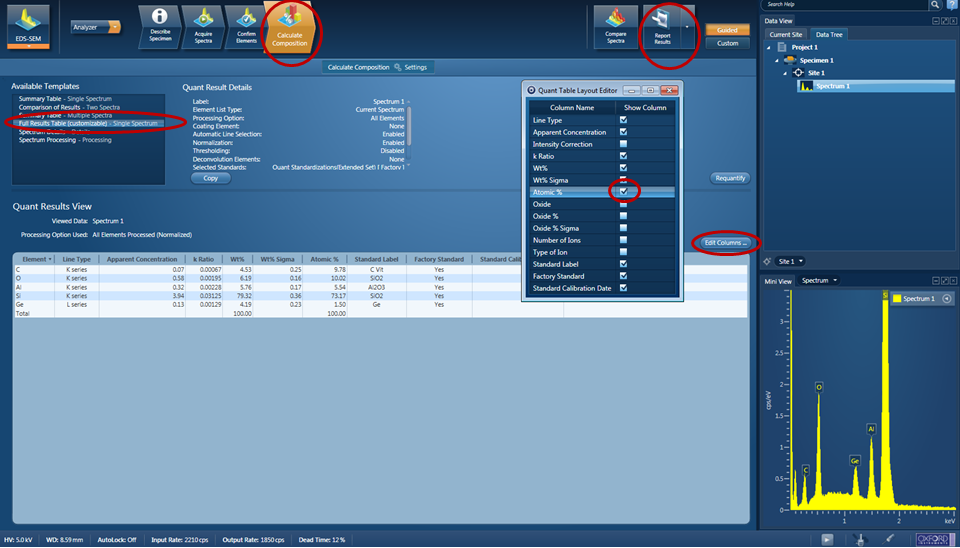
In the Calculate Composition step, first select the Template, most commonly used one is the “Full Results Table”, where you can customize the columns by clicking the “Edit Columns” tab and checking all columns from the menu that you want. Atomic % is the most commonly desired one.
If you want to export results into some format that you can read outside of the AZtec software environment, go to the Report Results tab and select desired formats from the file types and templates there. If you want to save the actual spectrum data in the x,y ascii format, go back to the Acquire Spectra step, right-click the mouse, select Export and EMSA.
Point & ID
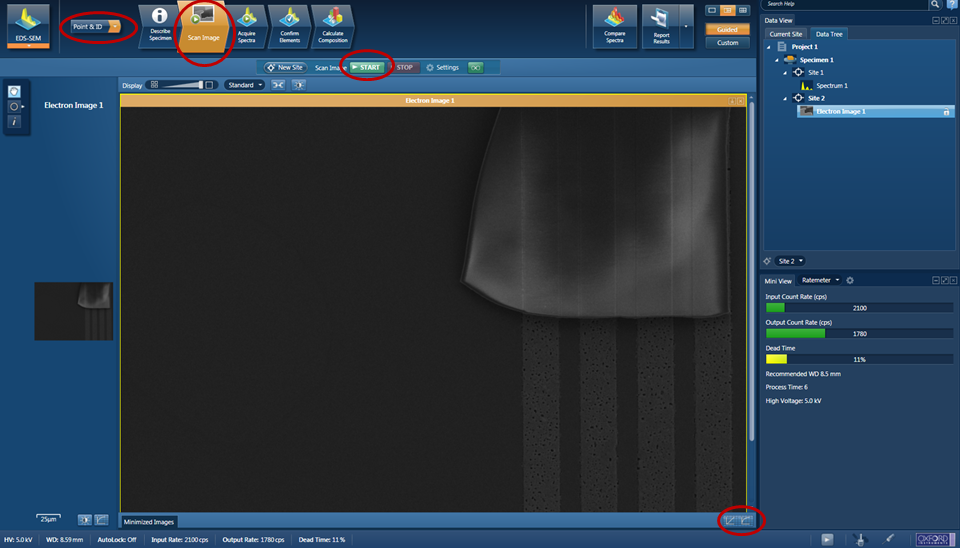
The Point & ID module allows for collection of a spectrum from only a select portion of the SEM image area. First step is to Scan Image. The AZtec software collects the image using the HE-SE2 detector. It is possible and recommended to quickly adjust gamma curve of the scanned image for better clarity by clicking the auto gamma button at the bottom right.
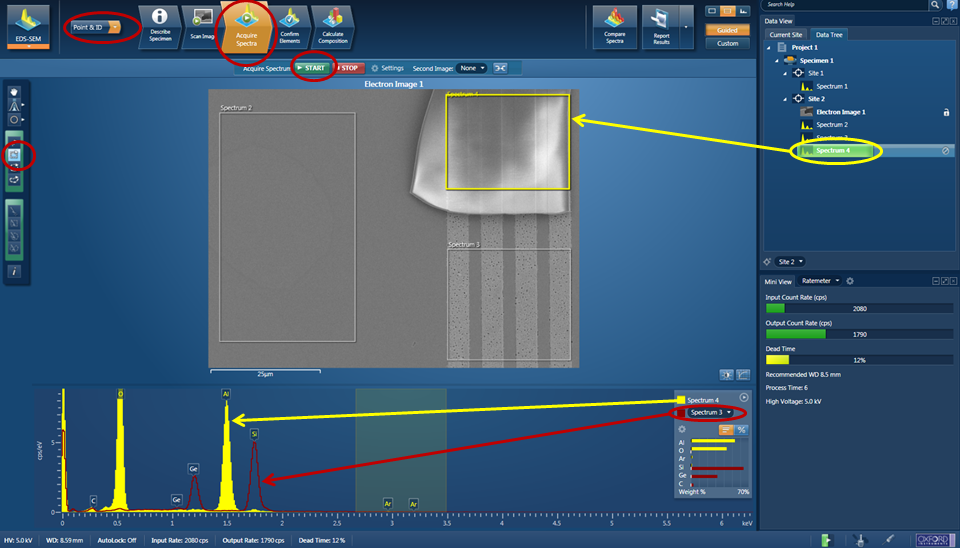
Move to the Acquire Spectra step. Select the shape drawing tool from the vertical bar on the left, and draw the area from which you want to collect the spectrum on the image. AZtec will take control over the SEM scanning and will scan the electron beam only within the specified area. After the spectrum collection finishes, you can select a different area. You can also run a live spectral comparison between the collected spectra (and thus between the different areas of the image). It is a very powerful technique for rapid identification of what is the composition of what feature in the image.
Linescan
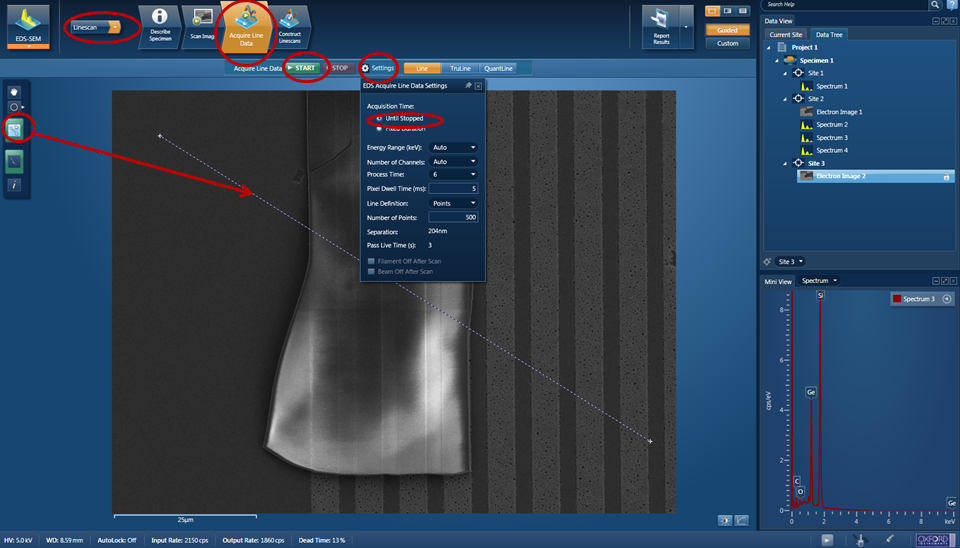
The Linescan module allows for collection of a full spectrum in each pixel of a single line drawn across the collected SEM image. Since the amount of signal in each pixel is much smaller than in a larger area, the collection time usually needs to be a bit longer, and typical setting chosen is “Until Stopped”. With this setting, the AZtec will keep collecting the spectra until it is stopped. Please, do NOT forget to stop the collection before you close the AZtec software or before you change module. To draw a line, simply select the Line symbol from the vertical bar on the left, and draw the desired line across the SEM image.
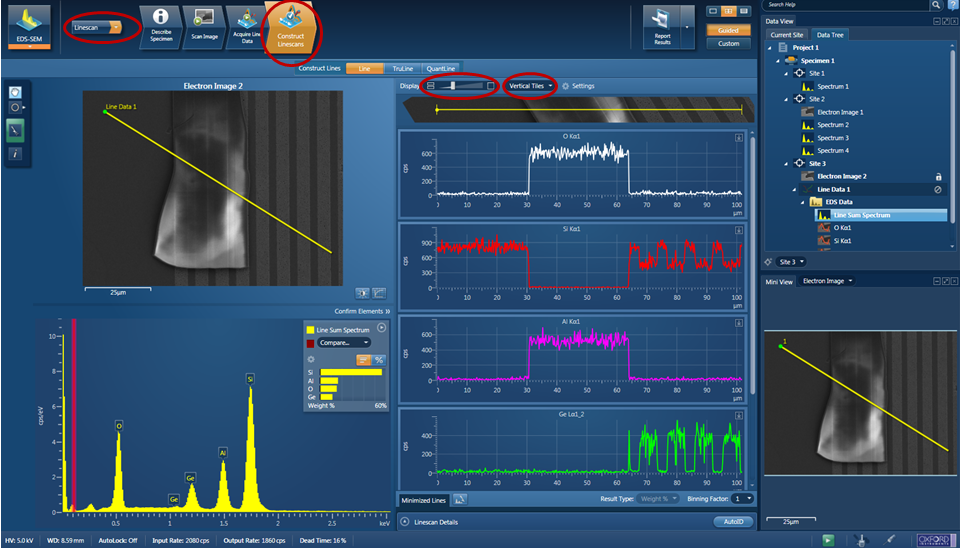
In the Construct Linescan step you can select the desired visual representation of the element composition across the line. The most popular option are carefully sized Vertical Tiles of each element of interest.
Map
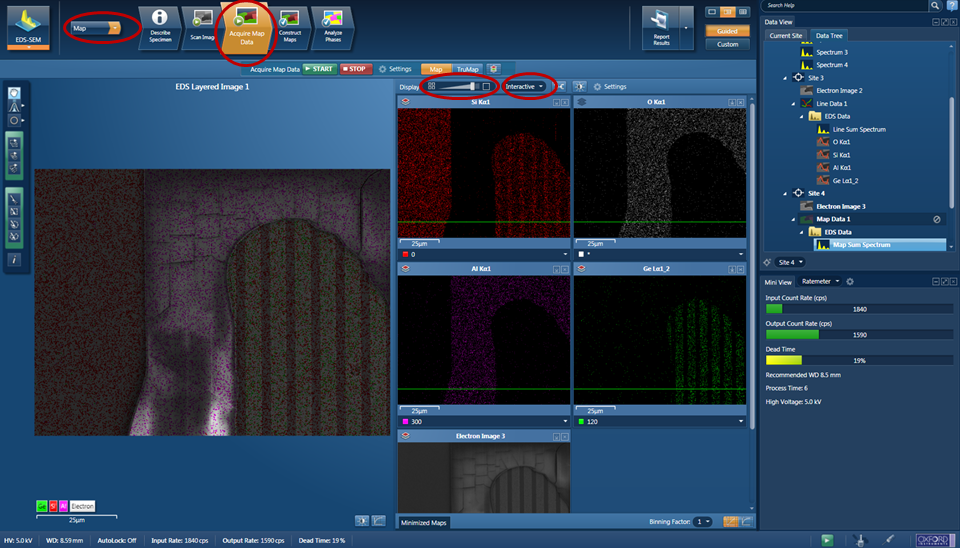
It is possible to collect and save a full spectrum information for each pixel of the SEM imaged area. This allows to construct a full elemental composition maps for the entire image, and constitutes a maximum amount of information that can be collected for each sample site. The acquisition times are significantly longer and the sample cannot be drifting at all during the process.
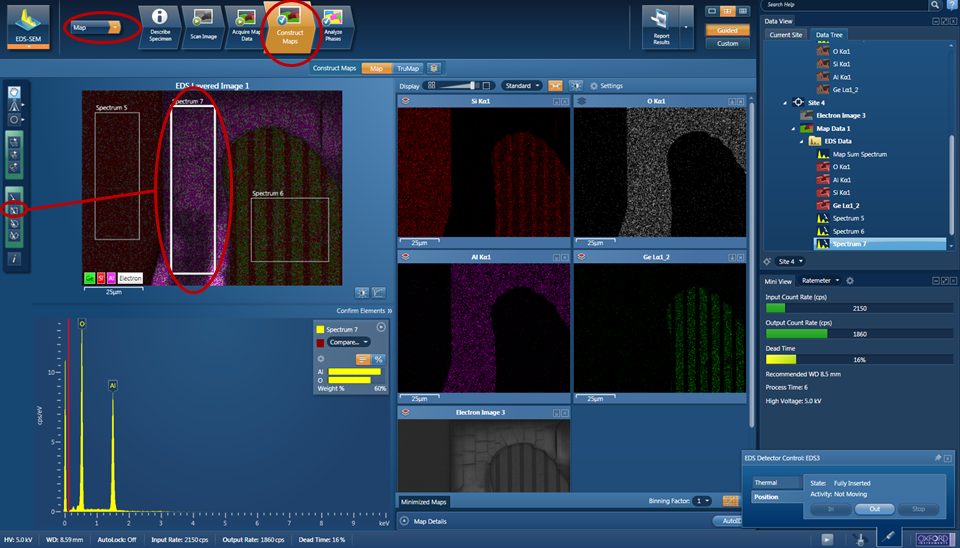
Once the maps are collected and created, off-line analysis of the type of Point & ID or Linescan can also be made from the map data if desired.
Finishing and closing

Before finishing and closing of the software, make sure you retract the EDX detector. To do this, click: Needle icon at the bottom right side of the monitor – Position – OUT. Give the detector about a minute to perform the operation, wait until the detector is fully retracted out. Now you can save your project, and exit by going to the main File menu in the top left and choosing Exit.
Off-line version of the AZtec software
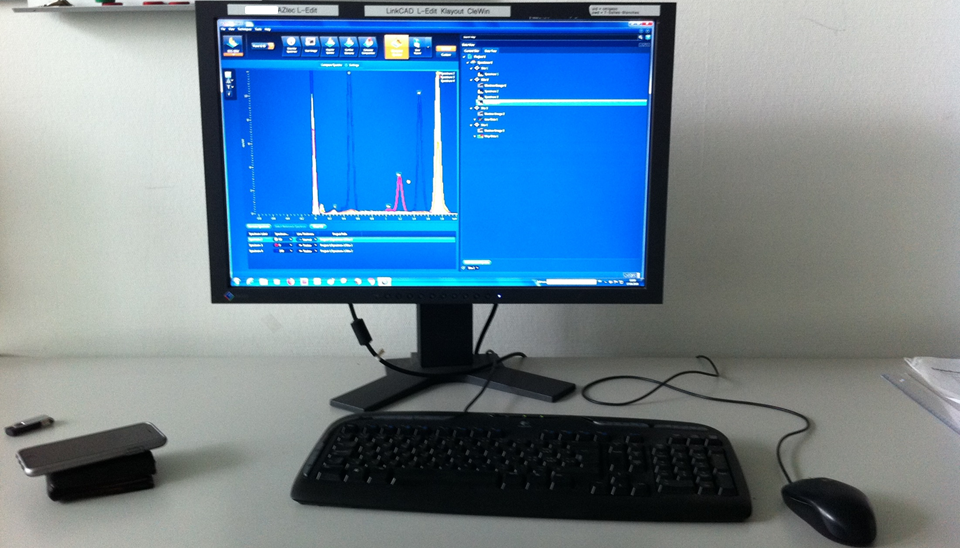
The only software that can read project files from the AZtec software is AZtec software. There is one off-line license available to CMi users – it is installed on one of the PC’s in the CMi computer lab in room BM1132. It is possible to access the project files saved on the EDX cleanroom computer from this PC.